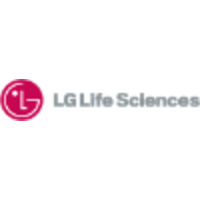BACKGROUND:Existing formulations of recombinant human erythropoietin (rhEPO) in Korea contain human serum albumin. To avoid the potential risk of infection by human serum albumin, a new albumin-free rhEPO has been developed.
OBJECTIVE:This study was conducted to characterize and compare the pharmacokinetic and safety profiles and the bioequivalence of a newly developed albumin-free rhEPO (Aropotin [TS Corporation, Seoul, South Korea]) with 2 existing rhEPO formulations (Espogen [LG Life Sciences, Seoul, South Korea]; Recormon [Roche, Basel, Switzerland]) with albumin in healthy Korean subjects.
METHODS:This was an open-label, randomized-sequence, 3-treatment, 3-way crossover study in which healthy, nonobese (+/-20% of ideal weight), male volunteers between the ages of 19 and 50 years were assigned to 1 of 2 dose levels (50 IU/kg or 100 IU/kg) of 3 formulations. Blood was collected over 32 hours and plasma rhEPO concentrations were determined using a validated enzyme immunoassay. There was a 14-day washout between periods. The pharmacokinetic parameters of the 3 formulations were compared using the bioequivalence criteria of the US Food and Drug Administration, which requires that the 90% CIs of the geometric mean ratios for AUC(0-t), AUC(0-infinity), and C(max) fall within 0.80 to 1.25. Tolerability was evaluated by physical examination with measurements of vital signs, clinical laboratory tests, and electrocardiogram. Subjects were followed up for 2 weeks after the last administration of study drug.
RESULTS:Twelve Korean male volunteers were enrolled and completed the study. Six subjects (mean [SD] age, 22.0 [1.7] years; weight, 63.3 [6.2] kg; height, 172.3 [3.5] cm) received a single 50 IU/kg IV bolus dose of study drug and the remaining 6 subjects (mean [SD] age, 23.7 [1.5] years; weight, 66.3 [4.8] kg; height, 174 [4.7] cm) received 100 IU/kg. After a single 50 IU/kg dose, the geometric mean ratio (90% CI) for Aropotin/Espogen was 1.04 (0.91-1.19) IU/L/h for AUC(0-t) and 1.02 (0.89-1.17) IU/L for C(max). The geometric mean ratio (90% CI) for Aropotin/Recormon was 1.01 (0.88-1.15) IU/L/h for AUC(0-t) and 1.01 (0.89-1.16) IU/L for C(max). After a single 100-IU/kg dose, the geometric mean ratio (90% CI) for Aropotin/ Espogen was 0.98 (0.86-1.13) IU/L/h for AUC(0-t) and 0.99 (0.87-1.13) IU/L for C(max). The geometric mean ratio (90% CI) for Aropotin/Recormon was 0.99 (0.861.14) IU/L/h for AUC(0-t) and 0.96 (0.84-1.10) IU/L for C(max). The most frequent adverse events (AEs) were 3 occurrences of elevated serum creatine phosphokinase and serum lactate dehydrogenase levels in the Recormon 100-IU/kg group (n = 3), 3 events of elevated serum lactate dehydrogenase levels in the Espogen 100-IU/kg group (n = 3), and 4 events of elevated serum total bilirubin levels in the Aropotin 100-IU/kg group (n = 3). All formulations were well tolerated with no serious AEs.
CONCLUSION:The new formulation of rhEPO met the regulatory criteria for bioequivalence in these healthy Korean adult male volunteers. All formulations were generally well tolerated.








